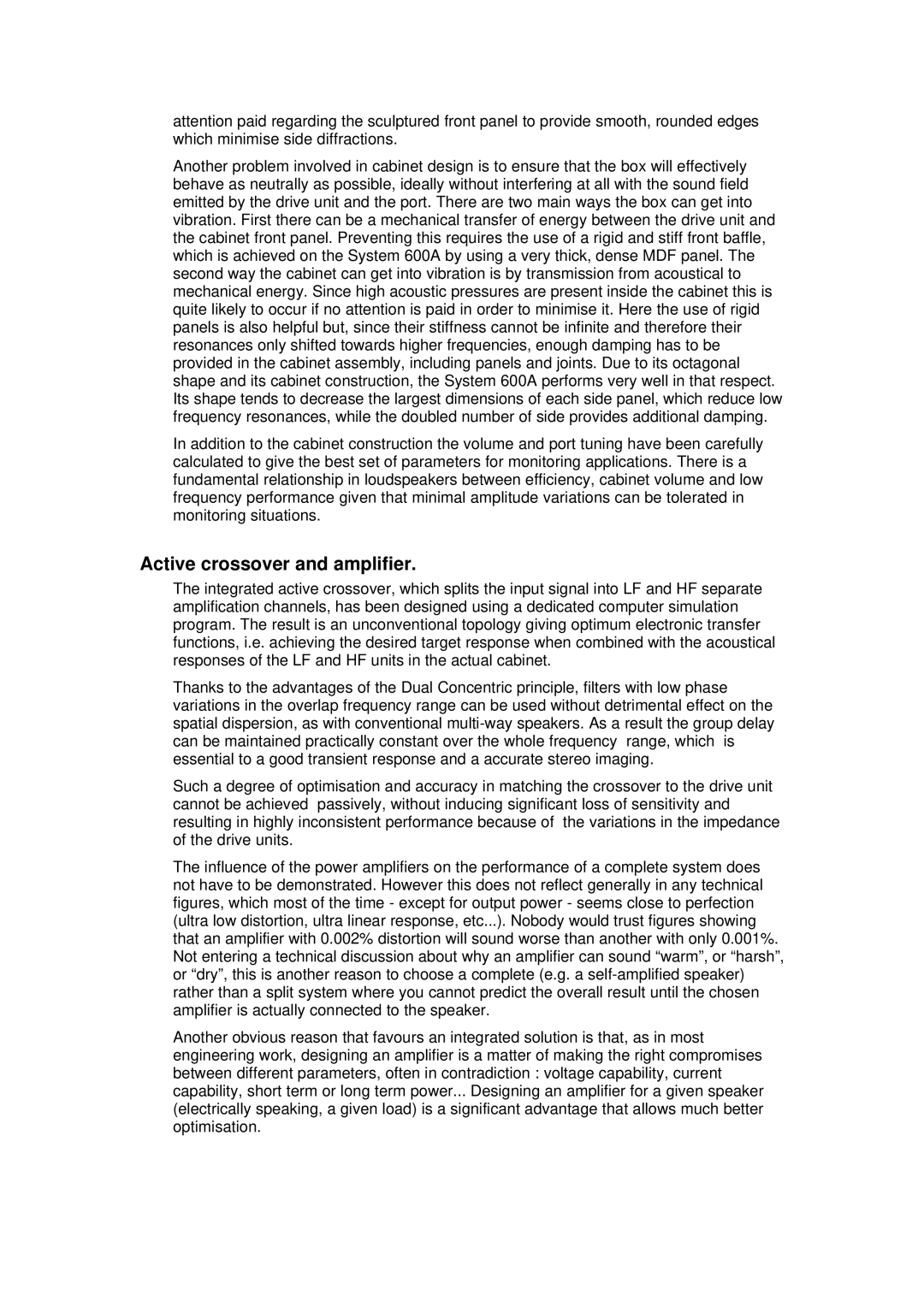attention paid regarding the sculptured front panel to provide smooth, rounded edges which minimise side diffractions.
Another problem involved in cabinet design is to ensure that the box will effectively behave as neutrally as possible, ideally without interfering at all with the sound field emitted by the drive unit and the port. There are two main ways the box can get into vibration. First there can be a mechanical transfer of energy between the drive unit and the cabinet front panel. Preventing this requires the use of a rigid and stiff front baffle, which is achieved on the System 600A by using a very thick, dense MDF panel. The second way the cabinet can get into vibration is by transmission from acoustical to mechanical energy. Since high acoustic pressures are present inside the cabinet this is quite likely to occur if no attention is paid in order to minimise it. Here the use of rigid panels is also helpful but, since their stiffness cannot be infinite and therefore their resonances only shifted towards higher frequencies, enough damping has to be provided in the cabinet assembly, including panels and joints. Due to its octagonal shape and its cabinet construction, the System 600A performs very well in that respect. Its shape tends to decrease the largest dimensions of each side panel, which reduce low frequency resonances, while the doubled number of side provides additional damping.
In addition to the cabinet construction the volume and port tuning have been carefully calculated to give the best set of parameters for monitoring applications. There is a fundamental relationship in loudspeakers between efficiency, cabinet volume and low frequency performance given that minimal amplitude variations can be tolerated in monitoring situations.
Active crossover and amplifier.
The integrated active crossover, which splits the input signal into LF and HF separate amplification channels, has been designed using a dedicated computer simulation program. The result is an unconventional topology giving optimum electronic transfer functions, i.e. achieving the desired target response when combined with the acoustical responses of the LF and HF units in the actual cabinet.
Thanks to the advantages of the Dual Concentric principle, filters with low phase variations in the overlap frequency range can be used without detrimental effect on the spatial dispersion, as with conventional
Such a degree of optimisation and accuracy in matching the crossover to the drive unit cannot be achieved passively, without inducing significant loss of sensitivity and resulting in highly inconsistent performance because of the variations in the impedance of the drive units.
The influence of the power amplifiers on the performance of a complete system does not have to be demonstrated. However this does not reflect generally in any technical figures, which most of the time - except for output power - seems close to perfection (ultra low distortion, ultra linear response, etc...). Nobody would trust figures showing that an amplifier with 0.002% distortion will sound worse than another with only 0.001%. Not entering a technical discussion about why an amplifier can sound “warm”, or “harsh”, or “dry”, this is another reason to choose a complete (e.g. a
Another obvious reason that favours an integrated solution is that, as in most engineering work, designing an amplifier is a matter of making the right compromises between different parameters, often in contradiction : voltage capability, current capability, short term or long term power... Designing an amplifier for a given speaker (electrically speaking, a given load) is a significant advantage that allows much better optimisation.
